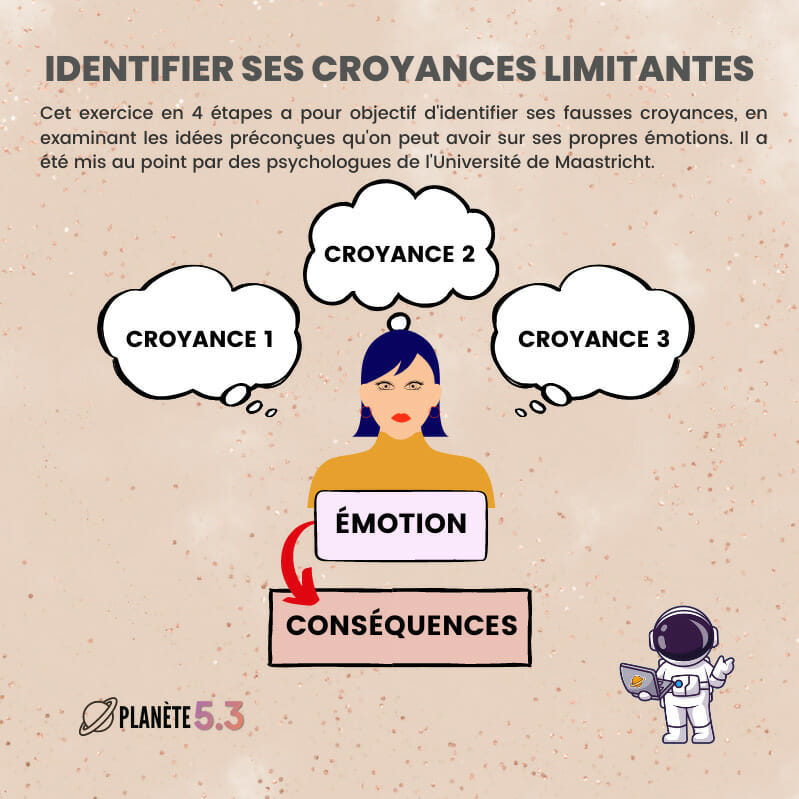Positive visualization is a mental imagery technique, derived from neurolinguistic programming (NLP). It is a powerful tool for mental preparation, confidence building and stress management which allows you to understand the situations you are required to experience.
Visualizing is a pleasant process, carried out without stress and without fear, the aim of which is to make you want to take action!
It’s about directing your thoughts in a positive way to project yourself into a desirable situation, in all its dimensions (people, place, emotions, sensations, etc.). This can allow your subconscious to integrate this new state and help you act naturally towards achieving this objective.
The technique is within everyone’s reach, as long as you take the time necessary to train. It doesn’t necessarily work the first time!
But it remains a tool, an aid, not a miracle! Nothing will happen if you don’t actually take action.
Here is the four-step method for creating a mental image.
Practice positive visualization in 4 steps
1. Stance
Make yourself comfortable (sitting or lying down) in a quiet place where you will not be disturbed for a good quarter of an hour. Turn off all sources of distraction (phone, TV, radio).
If it’s the first time, I recommend that you get into bed with the lights off. You can do it just before sleeping: you will be more comfortable and you will be less afraid of the judgment of others… If you are already used to meditating, adopt the same conditions as during a meditation session.
2. Relaxation
Relax and concentrate on your breathing for a few moments. The ideal, if you can, is to do a short 3-minute cardiac coherence session or 1-minute SB2 breathing to get in condition.
3. Location
Then, choose the situation you want to visualize. The most effective is to choose a specific event (the project presentation that you have to give next Monday) or a specific situation (you are called for a job interview). It’s important to have an idea of the dates, location and people present because it will give more realism to the mental image.
4. Creating the image
Then close your eyes and visualize the situation in a positive way. Things are going well, everything is under control, so leave your doubts and anxieties in the closet.
Make the situation as real as possible to experience it fully: look at the colors, the objects, everything that is around you. Is this place bright? Are the colors bright or light?
Is what you see animated like in a film or rather frozen like in a scrolling slideshow? Is it sharp or blurry? Are you in a spectator situation, like in the theater, or are you an actor on stage, like in real life?
Imagine images, actions, dialogues, but also noises, smells and feelings… The more your mental image appeals to the five senses, the more effective it will prove to be.
- You have to experience the situation in the present.
- You see yourself in detail: your clothes, your shoes, your mood…
- You feel in your body the joy of being there.
- You hear noises, voices…
- You can smell the scent of flowers, the smells…
- You feel the heat of the sun or the drops of rain on your face, the sand under your feet….
You are the main character in your story: for the emotion to be real and for you to benefit from the positive effects of visualization, you must be at the heart of the action.
It’s not a exercise as easy as it seems, because you have to be able to maintain the visualization over time (progressively) and it may not work the first time if you have never practiced it before. Insist (especially at the beginning)!
This exercise corresponds to a first situation of your desires. If an element of this mental imagery questions you, it is because it must be refined, reworked, until you are totally in agreement with the way you understand the situation. If the visualization is fluid and gives you a feeling of joy, then you have put your finger on what you are looking for.
The benefits of positive visualization
By experiencing this film in your head, you will give rise to emotions within you. These emotions will allow you to better manage the situation when, one day, you have to experience it in reality.
In this sense, positive visualization helps to increase self-confidence. It is one of the key tools of mental preparation. When you visualize yourself giving a presentation, you erase the fear of failing and the negative thoughts that go with it.
Anxious and stressed people tend to practice negative visualization, despite themselves. They can’t stop thinking about the things that could go wrong. Result: they maintain their stress. Positive visualization works in the opposite way: it blocks negative anticipations.



-1739366311.jpg)









